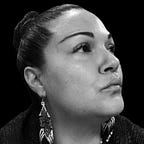A CALL to action
Thoughts after Connecting Art and Law for Liberation
Last month in L.A., the California Arts Council’s Arts in Corrections program sponsored the inaugural Connecting Art and Law for Liberation (CALL) bi-annual conference. The three-day event, hosted by the UCLA School of Law’s Prison Law and Policy Program, Criminal Justice Program, and the Prison Education Program was free and open to the public.
At the center of CALL’s itinerary was the intersection between art and law, two seemingly incompatible concepts bringing together artists, activist, attorneys, advocates, legal scholars, and community members to explore art as an advocacy tool and strategy for ending mass incarceration. Although the entire CALL event involved asking difficult questions about mass incarceration, the experience that lingers most in my mind — that demonstrated just how art can be a liberation practice in action — was watching Lyrics from Lockdown: A Performance and Workshop with Danny Glover & Bryonn Bain at Central Juvenile Hall.
It wasn’t the first time I experienced Bain’s Lyrics from Lockdown — in fact, I had seen it on two separate occasions prior. The show requires audiences to contend with and reflect upon the punitive structures of the United States carceral system. It uses hip-hop, spoken word, and monologues accompanied by music and images to tell stories that examine how race, class, power, and privilege have shaped prisons and policing in the United States. The show’s impact was no less deep for me, my third time around, at Central Juvenile Hall in Boyle Heights.
The youth at Central Juvenile Hall only got to experience an excerpt of the show. The room fell silent as Bain animatedly recounted his experience of being racially profiled and treated inhumanely during a routine traffic stop — a situation that ended with him spending night in jail without reason or explanation. Sitting in the Central Juvenile Hall’s chapel, sharing the space with the youth incarcerated in this facility, inside multiple layers of security fences and walls, Bain’s show struck me differently. I was hyper aware of my privilege as I observed the audience, Black and Brown teens experiencing incarceration. I saw myself in those young people, as a reflection of who I am, who my family is, who my community is.
During the show, I spent more time concentrating on the youth as they observed their experience than at Bain providing it. The teens often vocalized their approval of his monologues without words — sounds of acknowledgement of the collective experience they all knew too well. I wondered what the experience meant to them in that space, to witness the reenactment of Bain’s racial profiling and unjustified arrest, all under the watchful eyes and notable ratio of one probation officer for every three teens.
How did they feel to see a Black man embody the reality they know personally, and from their lived communities, where one in three Black men will experience incarceration? It felt painfully ironic, but I want to believe the emphatic applause from the youth at the end of Bain’s show allowed for some reprieve of the carceral system through the invocation of shared experience between Bain and the youth.
After Bain’s show and the panel discussion, the teens were given paper and pencils to write about themselves and how they are resilient. A few shared what they had written, and as they read their words, the prison walls dissolved around us. The energy in the room elevated to such a degree that when the last two teens started freestyling, the room exploded into exuberant dancing, clapping, and hollers of solidarity, as if they had for a moment forgotten the space where they were held captive.
The moment was honest, hopeful, and most of all joyful — a moment of embodied liberation where the teens were creators of their own experience using their own art. In that brief moment, art served an important role. It became the tool, the strategy, and the embodiment of resiliency — it was a collective act towards liberation. Moments like these are at the center of our Arts in Corrections program, using art as a tool to imagine and create alternative possibilities of ourselves and the future.
On the last day of CALL, “Next Steps” Roundtables were held, and our AIC team engaged in its contribution to the discussion of ending mass incarceration by co-envisioning the future of prison arts programming in California. We began by talking about the current state of AIC and the positive impacts it has had already.
I shared the floor with my co-presenter, artist and return citizen Le’Mar “Maverick” Harrison. Together we engaged in a community dialogue about the impact of language and the importance of centering humanity when working with people experiencing incarceration. Additionally, I shared the numerous changes to the AIC program under my leadership, including the simplified Request for Proposal process that reduces institutional barriers for small and grassroots organizations when accessing AIC funds.
During the roundtable, we brainstormed, discussed, strategized, and imagined a society with alternative justice models. Part of the imagination work is to give AIC a new name that reflects how art can be a tool for liberation for people experiencing incarceration. For people inside prisons, art is not just a tool for healing, it is also the opportunity for individuals to imagine other possible selves — just like the youth inside Central Juvenile Hall did that day.
This is why I do this work. Art inside prisons gives so much more than momentary reprieve. Most of all, it gives people experiencing incarceration a space to reclaim ownership of their own experiences and imagine future possibilities of themselves and the world.
Mariana Moscoso is Arts in Corrections Program Manager for the California Arts Council. For more information about California’s Arts in Corrections program, visit www.artsincorrections.org.
